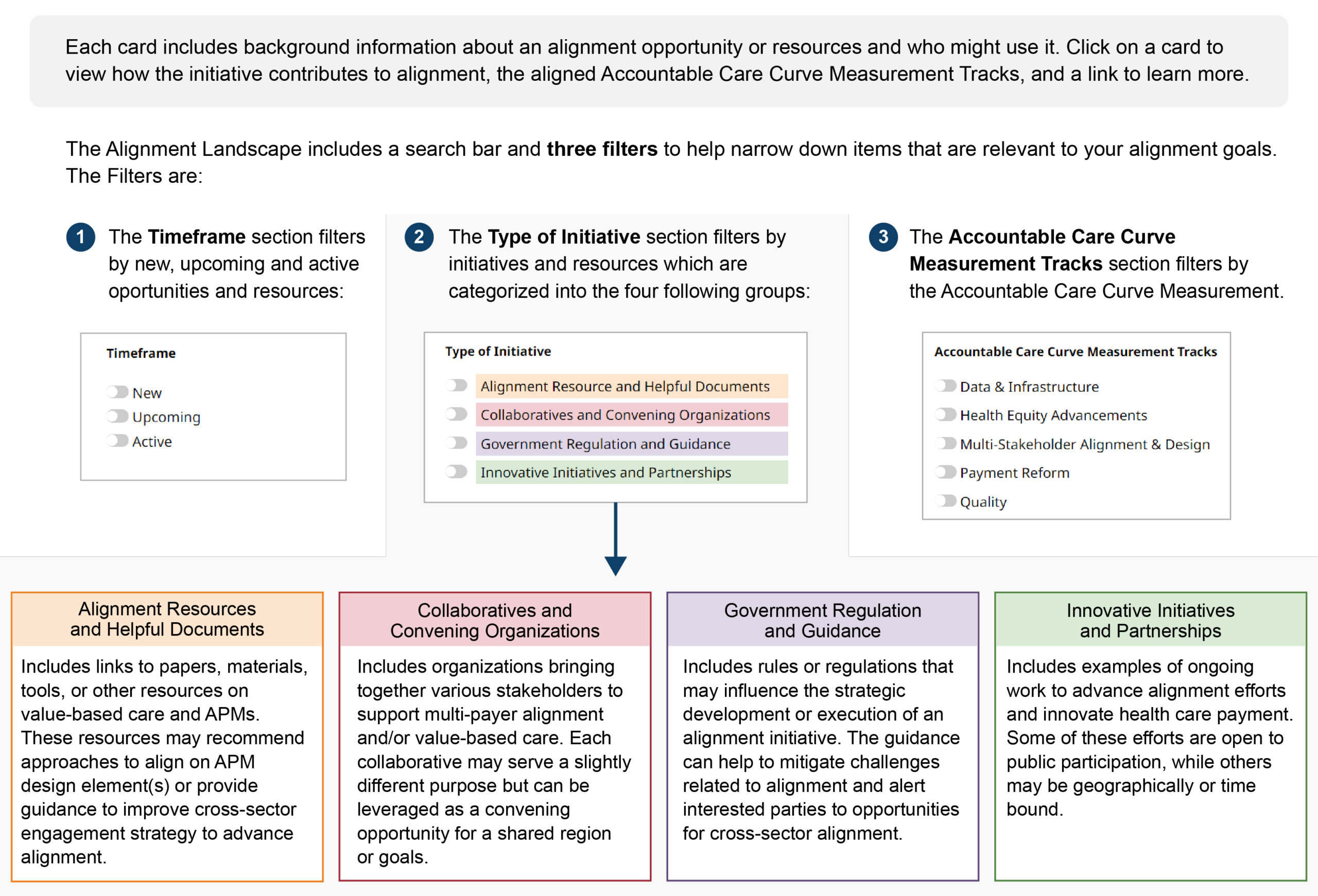Bulletin
Event Highlights
- The LAN recognizes the need to create an equitable and accountable health system that tracks commitment to accountable care delivery.
- Achieving alignment on the definition of accountable care is a LAN priority. The Accountable Care definition should capture the factors and precision needed to measure progress, align providers and payers, and improve healthcare outcomes.
- The Accountable Care Commitment Curve, which was introduced during the May Spring Event, is designed to measure progress towards enabling the factors required to achieve accountable care.
Humana’s Chief Medical Officer Dr. Will Shrank* provided an overview of the Accountable Care definition and the Accountable Care Commitment Curve.

Accountable Care: This definition provides a framework for payers and providers to use when providing care for patients and the population.
Accountable Care Commitment Curve: The Commitment Curve holistically measures accountable care commitment across the following four tracks:
- Payment Reform and Care Quality & Affordability
- Health Equity Advancements
- Data and Infrastructure
- Multi-Stakeholder Alignment and Design
The Commitment Curve provides a supplemental framework to mobilize stakeholders across the healthcare system. The Curve is designed to inform data-driven actions that effectively promote movement up the Curve toward a full transformation and development into a value-based care champion.
*As of August 5, 2022, Will Shrank is no longer the Chief Medical Officer at Humana
A transformed stakeholder is an organization that successfully shifts its payment and care delivery models towards advanced accountable care and becomes a champion for accountable care adoption.
Accountable Care Panel Discussion Summary
Moderator: Dr. Judy Zerzan-Thul, Chief Medical Officer at Washington State Health Care Authority

Panelists:
- Tamara Ward, Oscar Health: Senior Vice President of Insurance Business Operations
- Brandon Wilson, Community Catalyst: Director of the Center for Consumer Engagement in Health Innovation
- Emily Brower, Trinity Health: Senior Vice President of Clinical Integration and Physician Services
- Dr. Victor Wu, TennCare: Chief Medical Officer
- James Sinkoff, Sun River Health: Deputy Executive Officer and Chief Financial Officer
A summary of key topics discussed by the panel:
-
- Accountable Care: Most of the panelists described how the Accountable Care definition is focused on the goals of accountable care and includes the factors that drive better outcomes.
- Health Equity: Although the current definition uses the word “all,” it should specify “all communities” or “all people.” Currently, the health equity component is defined too vaguely, leaving it open for interpretation.
- Patient-Focus: There is a distinction between patient-centered care and patient-empowered care. The current definition should reflect how patient-empowered care can drive accountable care for patients. The definition should be more community-driven, developed, and derived.
- Methods employed for moving up the Commitment Curve:
- Adopting Medicare ACOs and CMMI models
- Addressing patients’ health related social needs
- Contracting for accountable care arrangements with state Medicaid agencies and commercial payers
- Implementing value-based payment arrangements such as downward/upside payment arrangements
- Developing organization-wide justice, equity, diversity, and inclusion initiatives to enable cultural shifts and address systemic issues
- Assessing and investing in data infrastructure to scale capabilities and transform the system
- Collecting data for social risk adjustments
- Developing better measures to prevent avoidable hospital readmissions
Summary of Feedback from Group Discussions
The LAN will use the feedback from the breakout sessions listed below and the feedback submitted by 23 different people and/or organizations on the website, to revise the Accountable Care Commitment Curve and the definition of Accountable Care.
Stay tuned! Our September newsletter will have more information and you will see the final definition of Accountable Care and the final Commitment Curve iteration at the annual LAN Summit on November 9 & 10.
Breakout Session Discussion Summary
The following Q&A summary represents the questions asked during the breakout sessions and the collective responses of the participants.
What is your reaction to the Accountable Care definition? Is there anything missing?
Suggestions:
- More emphasis should be given to explaining what accountability means and looks like for health equity and should acknowledge all stakeholders as being accountable
- More focus is needed on health equity and population-based healthcare in the definition
- Transitioning from the concept of “person-centered” to “person-empowered” care, can provide better healthcare options and the capacity for consumers to make better, informed healthcare choices
- The definition should acknowledge that care teams include other stakeholder roles (e.g., clinicians, downstream care organizations)
How is the Commitment Curve useful for you to take back to your team/staff to discuss accountable care in your practice/organization?
Suggestions:
- Provides the ability to determine where clients and organizations are on the Curve, level-set understanding, and determine how best to work with stakeholders to reach the next tier
- Identifies barriers to moving up the Curve (e.g., shortages of staff, resources, and COVID-19 setbacks)
- Facilitates trust-building to move up the Curve
- Facilitates more coordination between health plans at the state and national levels
- Enables us to acknowledge that no one is fully transformed yet on the health equity track
How can the LAN support organizations move up the Curve?
Suggestions:
- Develop and provide case studies, infographics, best practices, templates, toolkits, and other resources
- Establish national standards and criteria for each of the tiers
- Dispel myths around APMs and break down fears caused by competing interests
- Place health equity at the beginning of the Curve, not at the end
- Communicate payment reform as being essential to move along the Curve
Is there anything missing or not represented in the Commitment Curve graphic?
Suggestions:
- Additional emphasis on measurement and shared accountability is needed
- Patient-oriented outcomes should be included
- The perspectives of patients, caregivers, pharmaceuticals, behavioral health specialists, and community-based organizations need to be captured
- There should be a focus on data infrastructure and interoperability
- Alignment is needed for social care with medical care, as well as a cross-cutting integration of health equity
- There should be expansion beyond PCPs; include behavioral health and other specialties
- LAN should partner with public health colleagues, community organizations, and health care entities

Mark your calendars on November 9 & 10, 12-3 PM ET, for the 2022 LAN Virtual Summit! More information to come.
Event Recording
Watch the 2022 LAN Town Hall







 Emily DuHamel Brower, M.B.A., is senior vice president of clinical integration and physician services for Trinity Health. Emphasizing clinical integration and payment model transformation, Ms. Brower provides strategic direction related to the evolving accountable healthcare environment with strong results. Her team is currently accountable for $10.4B of medical expense for 1.6M lives in Medicare Accountable Care Organizations (ACOs), Medicare Advantage, and Medicaid and Commercial Alternative Payment Models.
Emily DuHamel Brower, M.B.A., is senior vice president of clinical integration and physician services for Trinity Health. Emphasizing clinical integration and payment model transformation, Ms. Brower provides strategic direction related to the evolving accountable healthcare environment with strong results. Her team is currently accountable for $10.4B of medical expense for 1.6M lives in Medicare Accountable Care Organizations (ACOs), Medicare Advantage, and Medicaid and Commercial Alternative Payment Models. Mr. James Sinkoff is the Deputy Executive Officer and Chief Financial Officer for Sun River Health (formerly known as Hudson River HealthCare), and the Chief Executive Officer of Solutions 4 Community Health (S4CH); an MSO serving FQHCs and private physician practices.
Mr. James Sinkoff is the Deputy Executive Officer and Chief Financial Officer for Sun River Health (formerly known as Hudson River HealthCare), and the Chief Executive Officer of Solutions 4 Community Health (S4CH); an MSO serving FQHCs and private physician practices. Victor is the Chief Medical Officer for TennCare, Tennessee’s Medicaid Agency. At TennCare, Victor leads the medical office to ensure quality and effective delivery of medical, pharmacy, and dental services to its members. He also leads TennCare’s opioid epidemic strategy, social determinants of health, and practice transformation initiatives across the agency. Prior to joining TennCare, Victor worked at Evolent Health supporting value-based population health care delivery. In 2013, Victor served as a White House Fellow to the Secretary of Health and Human Services. Victor completed his Internal Medicine Residency at Emory University still practices clinically as an internist in the Veteran’s Affairs Health System.
Victor is the Chief Medical Officer for TennCare, Tennessee’s Medicaid Agency. At TennCare, Victor leads the medical office to ensure quality and effective delivery of medical, pharmacy, and dental services to its members. He also leads TennCare’s opioid epidemic strategy, social determinants of health, and practice transformation initiatives across the agency. Prior to joining TennCare, Victor worked at Evolent Health supporting value-based population health care delivery. In 2013, Victor served as a White House Fellow to the Secretary of Health and Human Services. Victor completed his Internal Medicine Residency at Emory University still practices clinically as an internist in the Veteran’s Affairs Health System. Dr. Brandon G. Wilson, DrPH, MHA (he, him, his) joined Community Catalyst as the Director of the Center for Consumer Engagement in Health Innovation, where he leads the Center in bringing the community’s experience to the forefront of health systems transformation and health reform efforts, in order to deliver better care, better value and better health for every community, particularly vulnerable and historically underserved populations. The Center works directly with community advocates around the country to increase the skills and power they have to establish an effective voice at all levels of the health care system. The Center collaborates with innovative health plans, hospitals and providers to incorporate communities and their lived experience into the design of systems of care. The Center also works with state and federal policymakers to spur change that makes the health system more responsive to communities. And it provides consulting services to health plans, provider groups and other health care organizations to help them create meaningful structures for engagement with their communities.
Dr. Brandon G. Wilson, DrPH, MHA (he, him, his) joined Community Catalyst as the Director of the Center for Consumer Engagement in Health Innovation, where he leads the Center in bringing the community’s experience to the forefront of health systems transformation and health reform efforts, in order to deliver better care, better value and better health for every community, particularly vulnerable and historically underserved populations. The Center works directly with community advocates around the country to increase the skills and power they have to establish an effective voice at all levels of the health care system. The Center collaborates with innovative health plans, hospitals and providers to incorporate communities and their lived experience into the design of systems of care. The Center also works with state and federal policymakers to spur change that makes the health system more responsive to communities. And it provides consulting services to health plans, provider groups and other health care organizations to help them create meaningful structures for engagement with their communities. Tamara Ward is the SVP of Insurance Business Operations at Oscar Health, where she leads the National Network Contracting Strategy and Market Expansion & Readiness. Prior to Oscar she served as VP of Managed Care & Network Operations at TriHealth in Southwest Ohio. With over 15 years of progressive health care experience, she has been instrumental driving collaborative payer provider strategies, improving insurance operations, and building high value networks through her various roles with UHC and other large provider health systems. Her breadth and depth of experience and interest-based approach has allowed her to have success solving some of the most complex issues our industry faces today. Tam is passionate about driving change for marginalized communities, developing Oscar’s Culturally Competent Care Program- reducing healthcare disparities and improving access for the underserved population. Tamara holds a B.A. from the University of Cincinnati’s and M.B.A from Miami University.
Tamara Ward is the SVP of Insurance Business Operations at Oscar Health, where she leads the National Network Contracting Strategy and Market Expansion & Readiness. Prior to Oscar she served as VP of Managed Care & Network Operations at TriHealth in Southwest Ohio. With over 15 years of progressive health care experience, she has been instrumental driving collaborative payer provider strategies, improving insurance operations, and building high value networks through her various roles with UHC and other large provider health systems. Her breadth and depth of experience and interest-based approach has allowed her to have success solving some of the most complex issues our industry faces today. Tam is passionate about driving change for marginalized communities, developing Oscar’s Culturally Competent Care Program- reducing healthcare disparities and improving access for the underserved population. Tamara holds a B.A. from the University of Cincinnati’s and M.B.A from Miami University.


 Dr. Peter Walsh joined the Colorado Department of Health Care Policy and Financing as the Chief Medical Officer on December 1, 2020. Prior to joining HCPF, Dr. Walsh served as a Hospital Field Representative/Surveyor at the Joint Commission, headquartered in Oakbrook Terrace, Illinois.
Dr. Peter Walsh joined the Colorado Department of Health Care Policy and Financing as the Chief Medical Officer on December 1, 2020. Prior to joining HCPF, Dr. Walsh served as a Hospital Field Representative/Surveyor at the Joint Commission, headquartered in Oakbrook Terrace, Illinois.








